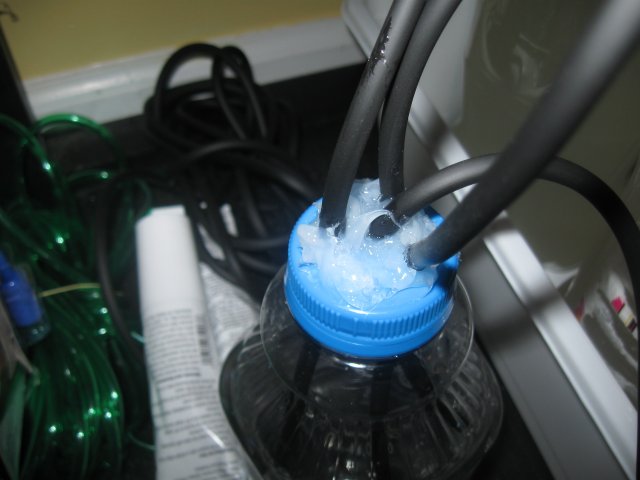Also the rapid rise yeast is good for getting a burst of CO2 but it burns out quickly and you will find that you need to mix batches much more often.
that is not accurate, this setup below lasted 4 weeks. Its ALL I ever use.

Also the rapid rise yeast is good for getting a burst of CO2 but it burns out quickly and you will find that you need to mix batches much more often.

that is not accurate, this setup below lasted 4 weeks. Its ALL I ever use.
I have checked connections, i.e. did I put the check valves on wrong, and that is not the case. I am resilicon-ing the bubble counter inside and out. Hopefully that works.Yeah it really sounds like you have a leak somewhere. There definitely should be enough pressure to push through the airstone if sealed properly.
With that many bottles there are alot of potential leaks. I have 3 x 2L bottles running on my 46 gallon and I had alot of leaks at first. I suggest blocking the outlet and squeezing the bottles to see if air is escaping somewhere. And the as was mentioned above, superglue the connections, and for good measure silicon it as well.
One other thing, you may want to consider building a reactor to make the CO2 dissolution more effective.
Also the rapid rise yeast is good for getting a burst of CO2 but it burns out quickly and you will find that you need to mix batches much more often.
do you own a drill? if so i'd say forget the silicone. trying to seal this kind of connection is too much trouble to make it worth it, imo... especially since you're depending on all those connections. too many fail points! get yourself a 3/32" drill bit and drill all your holes with that. cut angles in the ends of your hoses that go to the bottles (not where your check valves go obviously). feed your angled hoses into the lids and pull them through with some pliers. no silicone needed and the only way to fail really is to wiggle your drill too much. shouldn't be too hard to avoid.

I drilled the holes going in...but at 1/4", didn't angle the cut. Here is what the top of the thing looks like now...I have the output from the bubbler going into a glass of water...if I don't see bubbles there it is time to junk the whole bubbler and start it over, doing what you said.


